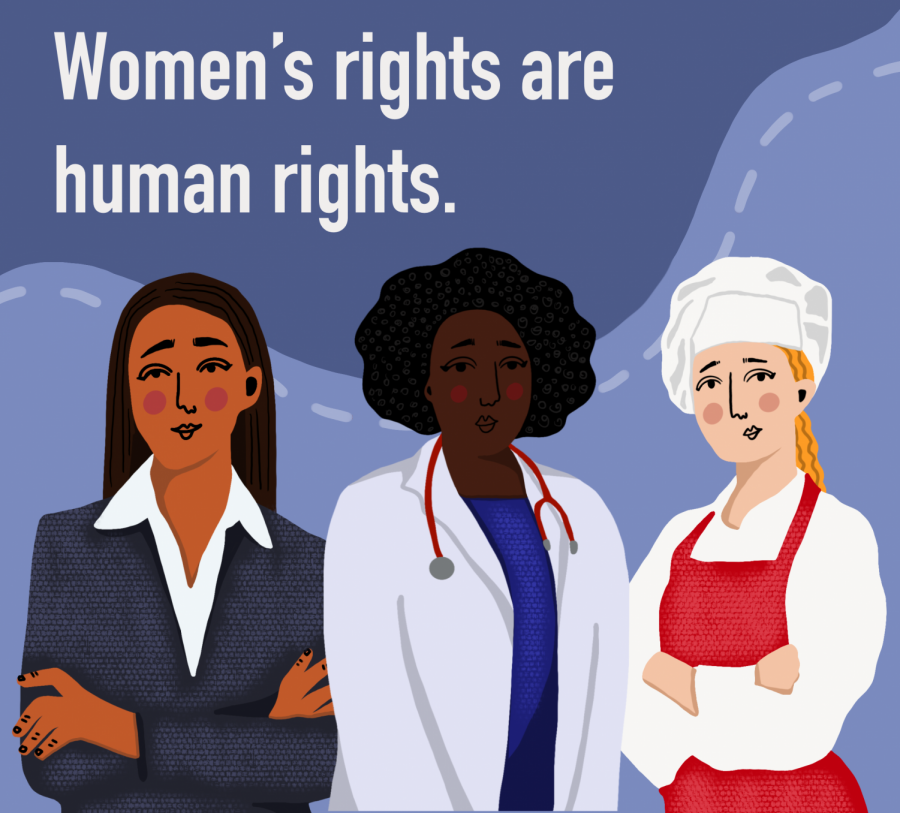Editorial | Equal Rights Amendment galvanizes more perfect union
March 18, 2021
The glass ceiling has surely cracked nowadays, yet an absolute shatter remains prolonged with crucial codification for women being delayed.
Despite a momentous year for improved societal representation — especially as America elected its first female Vice President, Kamala Harris — the nation continually lacks the required legal representation to ensure women are not secondary to men.
Additionally, for fulfilled protection of women, the Equal Rights Amendment (ERA) must not only be endorsed and promoted by politicians, but it must garner genuine ratification to demolish the invasive glass ceiling.
Drafted originally in 1923, the Brennan Center for Justice chronicles the amendment’s origin subsequently was “the next logical step following the successful campaign to win access to the ballot through the adoption of the 19th Amendment.” Conceptualized as a specificity for gender equality in the constitution, the ERA was and remains, for many, the imperative hammer to pulverize society’s patriarchal obstacles.
The amendment itself underwent a lengthy journey, culminating in 1972 when Congress delivered the final text to the states declaring, “equality of rights under the law shall not be denied or abridged by the United States or by any state on account of sex.”
Flying through both chambers of Congress — far ahead of the two-thirds needed — the ERA’s development through the 38 states needed for ratification is an expedition ranging from Hawaii in ‘72, with about 30 other states approving that year, to Illinois conclusively licensing in 2018 and Virginia ratifying the amendment last year.
Despite Virginia being the crowning state needed for this constitutional modification, the ERA’s recent progress has been suspended to a standstill.
Following troubles in court and a few states vying to rescind their ratification, the ERA’s remaining prospect lies in a congressional extension: an item currently awaiting a vote in both the House and Senate.
Notably, this extension has garnered bipartisan support as Senators Ben Cardin (D-Md.) and Lisa Murkowski (R-Ak.) have introduced a Senate resolution matching the House’s proposed, equivalent measure; House Majority Leader Steny Hoyer asserts a bipartisan extension will pass in the House momentarily.
It is the Senate, nonetheless, where the ERA’s voyage, coupled with the crippling filibuster, will be the climactic watershed for this gratifying amendment, a century in the making.
However, renewed interest in the ERA is not clear of criticism. Detractors of the amendment argue that this addition, proposed over one hundred years ago, serves futile purposes in protecting women. Additionally, critics perceive today’s improved representation — namely women in Congress and now the vice presidency — as proof the ERA is extraneous.
Besides the flagrant disregard for the continuous lack of equal representation in government — women representing more than half of the US, while only portraying about a quarter of Congress — the ERA is the entitled foundation of outstanding codification for women.
In enshrining against the discrimination “on account of sex,” the ERA establishes a progressive roadmap for other belated policies — strikingly in the region of equal pay and treatment for working women. Even more so, Ms. Magazine articulates the ERA as the essential “Marshall Plan for Moms,” with the ERA guaranteeing that mothers are assured decisive equality in their nation’s constitution.
Correspondingly, writers Dolores Huerta, Carol Jenkins and Eleanor Smeal note in their op-ed for USA Today, “There’s no deadline on women’s equality,” that notoriously it was Abigail Adams in 1776 who urged then-founding father John Adams to “remember the ladies and be more generous and favorable to them than your ancestors.”
Over two hundred years predating any serious administrative power for women in this nation, Abigail also obliged, “do not put such unlimited power into the hands of the husband.”
Sadly, this expectation for a legitimately equal nation did not originate at its premier founding, and today it regularly lags in embodying the “more perfect union” outlined in its constitution.
The condition for women today has improved from its last consequential occasion — the 19th amendment — yet when the bare minimum is complete equality in the law, the bar could not be any lower.
Nevertheless, for this Women’s History Month, Congress and this nation must prioritize the paramount passage of the ERA to ensure an impartial union exists in this nation that has perpetually neglected “the ladies” at justice’s behest.






